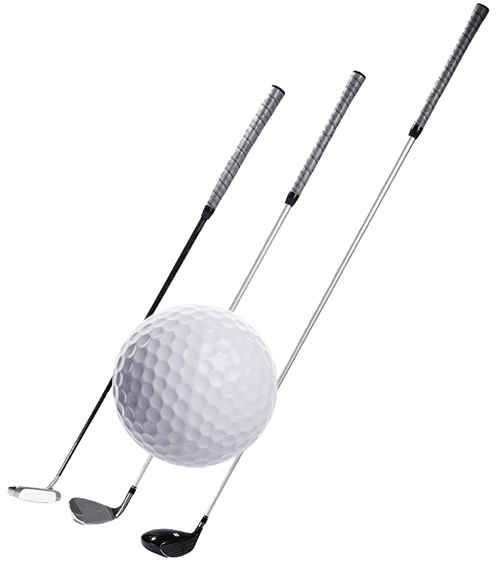Why are golf clubs different lengths?
Golf clubs come in various lengths, each serving a specific purpose on the course. From drivers to putters, the length of a club impacts the golfer’s swing, distance, and accuracy.

Let’s explore the reasons behind the differences in length.
Swing Dynamics
The length of a golf club directly affects the swing dynamics of a golfer. Longer clubs offer a greater swing arc, allowing players to generate more clubhead speed and consequently, more distance. Conversely, shorter clubs provide more control over the swing, enhancing accuracy.
Club Type and Function
Different clubs serve different purposes on the golf course. For instance, drivers are the longest clubs in a golfer’s bag, designed to hit the ball the farthest distance off the tee. Fairway woods and hybrids are slightly shorter than drivers but still prioritize distance. Irons, ranging from long irons to short irons, decrease in length progressively, offering versatility for various distances and shot types. Wedges are shorter still, focusing on precision shots around the green. Putters, the shortest clubs, are specialized for accuracy on the putting surface.
Player Height and Body Proportions
Club length is often customized based on a player’s height, arm length, and posture. Taller golfers typically require longer clubs to maintain proper swing mechanics, while shorter players may benefit from shorter clubs for improved control. Custom fitting ensures that each golfer’s equipment matches their physical attributes and swing characteristics, optimizing performance.
Historical and Technological Evolution
The evolution of golf club design has influenced the lengths of clubs over time. Early golf clubs were handmade and varied significantly in length and design. However, as golf became more standardized, club lengths began to align with industry norms. Technological advancements in materials and manufacturing techniques have also contributed to changes in club length, allowing for greater customization and optimization of performance.
Interesting Facts and Historical Insights

The concept of standardized club lengths emerged in the late 19th century with the formation of golf clubs and societies.
Early golfers used clubs made from wood, example: hickory and persimmon, which varied in length and design.
The introduction of steel shafts in the 20th century revolutionized club manufacturing, providing greater consistency in length and performance.
Professional golfers often undergo extensive club fitting sessions to fine-tune their equipment for optimal performance, including customizing club lengths to suit their individual preferences and playing style.
The diverse lengths of golf clubs serve specific purposes dictated by swing dynamics, club type, player characteristics, and historical evolution.
Understanding these factors allows golfers to optimize their equipment for improved performance on the course.












